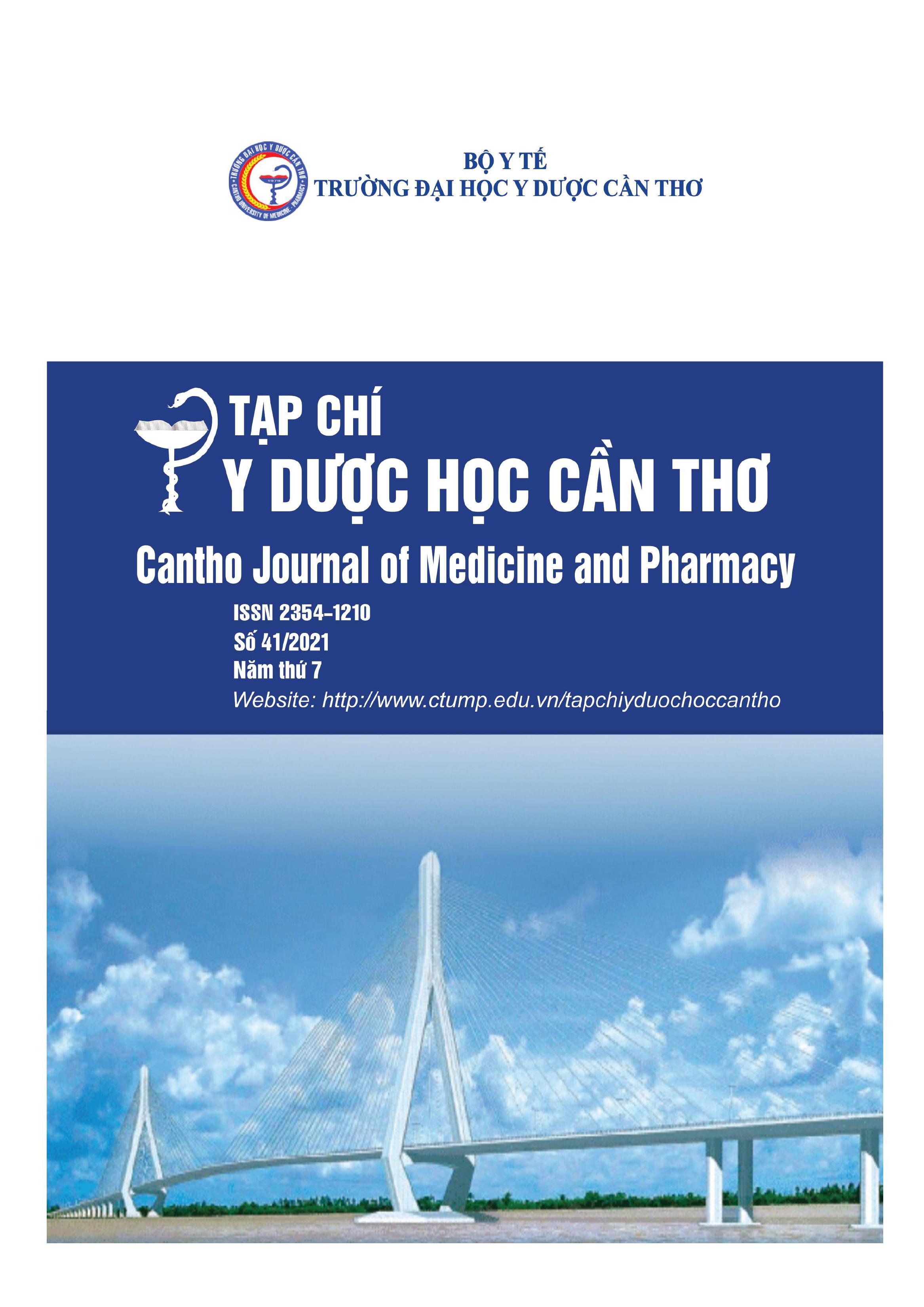PRELIMINARY PHYTOCHEMICAL SCREENING, ANTIOXIDANT ACTIVITY OF THE LEAF EXTRACT FROM (CLEISTOCALYX OPERCULATUS ROXB.), MYRTACEAE
Main Article Content
Abstract
Background: In Viet Nam, leaves of Cleistocalyx operculatus Roxb. is a popular medicinal herb used for preparing traditional beverages or decoction. Extracts from these medicinal plants were demonstrated effectively in treatment of dyspepsia, diarrhea, abscess, chronic colitis, and dysentery. There are not many studies on the chemical compositions and the pharmacological activities of the leaves of this plant. Objectives: Preliminary analysis of phytochemical composition and survey antioxidant activity of the Cleistocalyx operculatus leaf extracts by the DPPH method. Materials and methods: The leaves of Cleistocalyx operculatus were analyzed phytochemical composition by the Ciulei method. Dried and ground to coarse powders, extracted with ethanol 70%, partitioned with increasing polar solvents (n- hexane, chloroform, ethyl acetate) to obtain extract and its fractions. The antioxidant activity was evaluated by DPPH scavenging assay. Results: The Cleistocalyx operculatus leaves contain flavonoids, polyphenols, essential oils, triterpenoids, polyuronics, phenolic acids, carotenoids. All of the extracts exhibited high antioxidant activity. Among them ethyl acetate fraction possessed higher levels of activity (82.05%). Conclusion: The leaf extracts of Cleistocalyx operculatus contain flavonoids, polyphenols, essential oils, triterpenoids, polyuronics, phenolic acids, carotenoids. All extracts, especially ethyl acetate extract, showed an antioxidant effect on the DPPH method.
Article Details
Keywords
Cleistocalyx operculatus leaves, phytochemicals, flavonoids, antioxidant, DPPH
References
2. Bùi Thị Hồng Chiên, Nguyễn Vân Hương, Lâm Phạm Phước Hùng, Nguyễn Thị Vân Anh, Cao Ngọc Huyền và cộng sự (2020), Khảo sát hoạt tính chống oxi hóa và kháng khuẩn của acid Masilinic phân lập từ lá vối (Cleistocalyx operculatus (Roxb.) Merr. And Perry, Tạp chí Công nghệ sinh học Y Dược, tr.770-775.
3. Hoàng Thị Trúc Quỳnh, Nguyễn Thị Minh Thôi, Trần Thị Thu Hương (2017), Đánh giá hiệu quả hỗ trợ trích ly polyphenol từ lá vối bằng hai phương pháp: siêu âm và xử lý bằng enzyme cellulase, Tạp chí khoa học Đại học Văn Hiến, tập 5 số 4, tr.100-105.
4. Alhakmani F, Kumar S, Khan SA (2013). Estimation of total phenolic content, in-vitro antioxidant and anti-inflammatory activity of flowers of Moringa oleifera. Asian Pac J Trop Biomed, 3(8):623-627.
5. Dung N. T., Bajpai V. K., Yoon J.I., Kang S.C. (2009), Anti – inflammatory effects of essential oil isolated from the bud of Cleitocalyx operculatus (Roxb.) Merr., et Perry, Food and Chemical toxicology 47 (2), pp.449-453.
6. Lee MT, Lin WC, Yu B, Lee TT (2017). Antioxidant capacity of phytochemicals and their potiential effects on oxidative status in animal – A review. Asian – Australasian Journal of Animal Sciences, 30(3):299-308.
7. Min B.-S., Thu C.V., Dat N. T., Dang N. H., Jang H.-S., Hung T.M. (2008), Antinoxidative flavinoids from Cleitocalyx operculatus buds, Chemical pharmaceutical Bulletin 56(12), pp.1725-1728.
8. Panche AN, Diwan AD, Chandra SR (2016). Flavonoids: an overview. Journal of Nutritional Science, 5:e47.
9. Sen, S., Chakraborty, R. (2011), The role of antioxidants in human health, p1-37.
10. Xu DP, Li Y, Meng X, Zhou T, Zhou Y, Zheng J, Zang JJ, Li HB (2017). Natural antioxidants in foods and medical plants: extraction, assessment and resource. International Journal of Molecular Sciences; 18(1):96.


